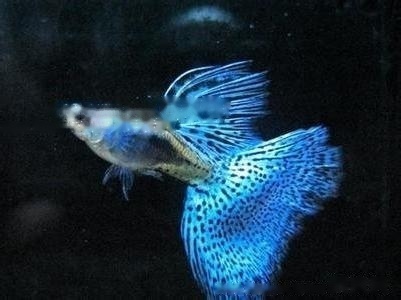
Peacock fish is a small fish with strong adaptability. It is also not suitable for high-density breeding, there will be competition for territory. What do aquarists need to prepare for raising guppies? Here is a pet editor to introduce to you!
Preparations for raising guppies
1. Selection of fish tank size
Guppy is a small fish, upper layer fish, which is more suitable for keeping in small, not deep aquariums. Under normal circumstances, the tank size for raising guppies will not exceed 50 cm, and the height should be less than 40 cm.
2. Cleaning and disinfection of fish tank
Using boiling water disinfection method, the disinfection is thorough, and there are no problems left over after chemical disinfection, and it is also the most environmentally friendly method. Be careful to place the cylinder smoothly, otherwise it is easy to crack. First add a small amount of boiling water to let the glass adapt to the temperature, and finally add an appropriate amount of boiling water for disinfection.
3. Chlorine volatilization in tap water
Keeping tap water is to let the tap water stand for 3 to 5 days to volatilize the chlorine gas in the water. Then add nitrifying bacteria to the water tank, and continuously oxygenate with water goblin for 24 hours, then a nitrification system can be initially established, and fish can be placed in this water.
4. Precautions for catching fish
Special care should be taken when catching fish to prevent the fish from being frightened, which may cause the fish to bump into the bag or the tank, or cause the tail to be pinched due to panic. Open the box in a dark place behind the house. Avoid vibration or rollover caused by excessive movement on the way. Because the fish will be weak and mentally tense after long-distance and long-term transportation in the environment of fasting and no light,
steps and precautions for mixing guppy with water
1. The water temperature reaches Consistent:
The water temperature in the tank is stable between 22 and 26 degrees. After receiving the fish, do not rush to open the packaging bag, first wash the packaging bag with water at the same temperature as the tank. Then put the packaging bag into the tank for about 20 to 30 minutes, so that the water in the bag and the water in the tank are at the same temperature.
2. Open the bag and gradually add water:
After opening the bag, first add water from the tank equal to 1/10 of the water in the bag into the bag, and then slowly and continuously add water to the tank. The reclaimed water is added to the bag to gradually adapt the fish to changes in water quality such as PH, KH, etc. The whole process lasts about 30 to 40 minutes.
3. Drain the raw water in the bag:
When the water added to the tank reaches the amount of water in the bag, gently remove the fish and put it into the tank. After the water is added, the raw water in the bag should be poured out, because the wastes excreted by the fish and the shed mucous membranes and other substances during the transportation process are the food and birthing bed that bacteria like, and are an important source of disease for the fish.
4. The light should not be too strong:
The fish will panic after entering the tank. At this time, the light should not be too strong, let alone disturb it. If the fish are too large, don't always run around around the fish tank after entering the tank, and remember not to feed them that day!
5. Observe the status of the fish:
Don't do it on the first day Feed it, don't change the water, and see how it goes. Generally speaking, the state of the fish will recover on the first day, such as finding food, chasing mates, etc. If the state is not good, you can add 1% concentration of saturated brine.
6. Feed a small amount of live bait:
On the second day, if the condition is good, the fish is looking for food, chasing mates, etc., you can feed a little less live bait. That's it, don't feed too much! Live food is best for open bait, such as brine shrimp.
7. Gradually increase the feeding amount:
If there is no problem on the third day and the condition is good, feed the same meal, a little more than the feeding amount yesterday, and gradually increase it within a week to the normal feeding amount. The same goes for a water change.
8. Isolation and observation of new fish:
The guppy has a minor disease cause, and the largest proportion is infection from other fish. If the newly purchased guppy is placed in the aquarium When inside, it is necessary to confirm first whether there is any disease or keep it in the quarantine tank for three to five days, and then put it in after confirming that there is no disease.
9. Pay attention to residual bait pollution:
Excessive feeding will lead to deterioration of water quality, and the daily feeding amount should be controlled. If it is too nutritious, the contamination of the residual bait will be more terrifying. If necessary, you should prepare to change the water immediately after feeding.
![[Dog Training 5] The training method of pet dog dining etiquette](/static/img/12192/12192_1.jpg)




